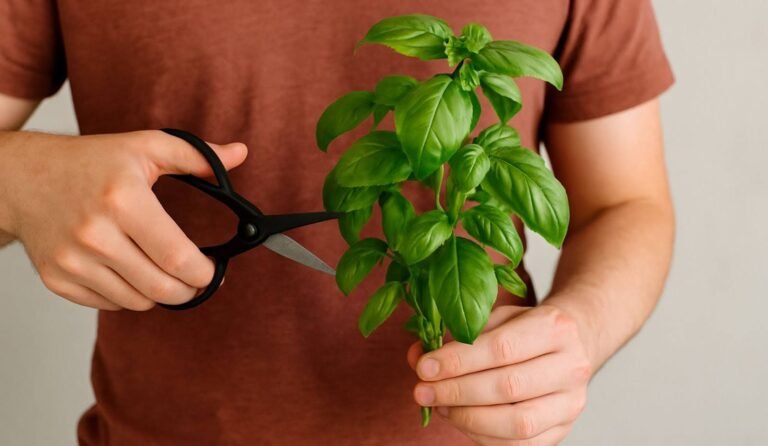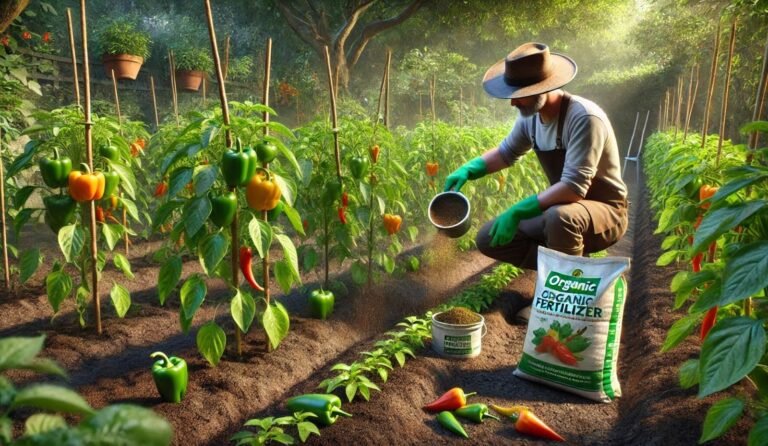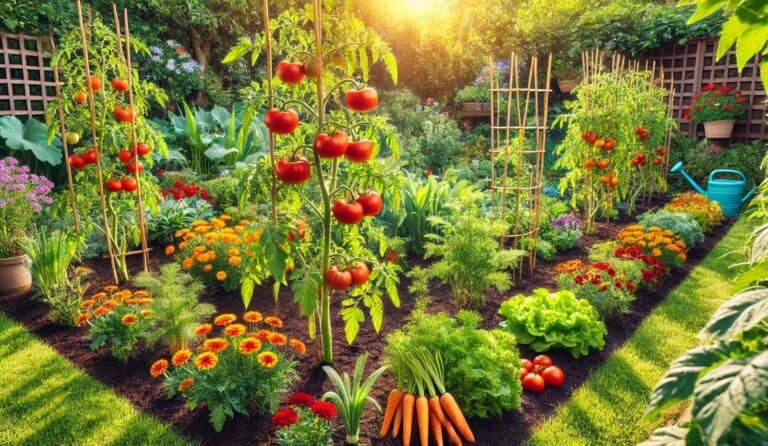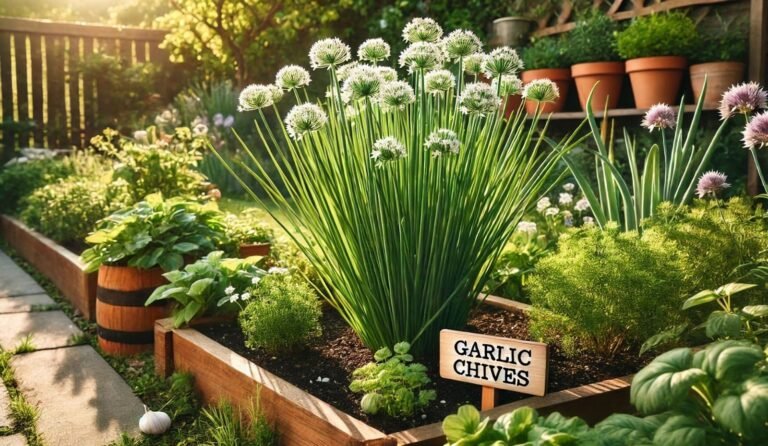Overwintering Pepper Plants: The Ultimate Survival Guide
Overwintering pepper plants is the secret to keeping your favorite peppers alive long after summer fades. Instead of starting from scratch every spring, you can carry your strongest plants through the cold months and get a head start on next season’s harvest. Sounds too good to be true? It’s easier than you think! With the right prep, a little pruning, and a cozy indoor spot, your peppers can survive and thrive. Stick around, and I’ll show you exactly how to do it.
Understanding How Pepper Plants Grow and Why Overwintering Works
Most people think of peppers as annual plants, meaning they only live for one season before dying off. However, peppers are actually perennials in warm climates, which means they can survive for years if they aren’t exposed to freezing temperatures. In places where winters are mild, pepper plants can keep growing year after year.
But in most temperate regions, the cold kills them before they get the chance. This is why overwintering works. Instead of letting your peppers succumb to the frost, you bring them indoors where they can stay warm. They won’t be growing much—if at all—but they’ll stay alive, and when you move them back outside in the spring, they’ll have a head start compared to newly planted seeds.
Another great thing about overwintering is that it extends the production life of your pepper plants. Some varieties, like shishito peppers, will continue producing for much longer than a single season if kept alive. This means that by overwintering your best plants, you’re setting yourself up for an even bigger and better harvest next year.
Do Pepper Plants Need Support?

One common question people have is whether or not their pepper plants need support. The answer depends on the type of pepper you’re growing and how large the plant gets. Smaller varieties, like jalapeños, serranos, or shishito peppers, usually don’t need any extra support.
They grow strong stems that hold up well on their own. But larger varieties, like bell peppers or sweet peppers, often benefit from some kind of staking or caging, especially once they start producing heavy fruit.
During the overwintering process, however, support isn’t as critical. Because the plant is entering a semi-dormant state, it’s not actively growing or producing fruit, meaning the risk of branches breaking under the weight of peppers is minimal. That said, if you’re keeping your plants in a warmer indoor space with continued growth, you might still want to stake them lightly to prevent them from drooping.
How to Prepare Your Pepper Plants for Overwintering
If you want your pepper plants to survive indoors, you can’t just yank them out of the ground and stick them in your living room. You need to prepare them properly, and that starts with selecting the right plants to bring inside.
Not all pepper plants are worth saving. If your plant has been struggling with disease, has weak stems, or was underproducing all season, it might be better to start fresh with new bell pepper seeds in the spring. Instead, choose strong, healthy plants with sturdy stems and a good root system.
Pruning for Dormancy
Before bringing your pepper plants inside, you’ll want to trim them back significantly. This might feel drastic, but trust me—it’s necessary. Cut the plant down to about half its original size, removing any dead or diseased leaves, excess branches, and any remaining fruit. The goal is to conserve energy and prevent unnecessary growth while the plant is resting.
Checking for Pests
One of the biggest mistakes people make when overwintering peppers is bringing pests inside with them. Bugs like aphids, spider mites, and whiteflies can wreak havoc on indoor plants, so you’ll want to inspect your pepper plants carefully before bringing them in. Rinsing the leaves with a mild soap solution or neem oil can help eliminate unwanted hitchhikers.
Potting for Indoors
If your peppers were growing directly in the ground, you’ll need to dig them up carefully and transfer them into pots before bringing them inside. Make sure to use well-draining soil and a pot with drainage holes to prevent root rot.
Where to Overwinter Your Pepper Plants
The key to successful overwintering is choosing the right environment. Since your peppers won’t be actively growing, they don’t need a ton of sunlight, but they do need stable temperatures and protection from extreme conditions.
Indoor Window Sills or Greenhouses
If you have a bright, south-facing window, this is a great place to keep your overwintering peppers. A greenhouse is even better since it maintains humidity and warmth naturally.
Using Grow Lights
If your home doesn’t get much natural sunlight during the winter, you might want to use grow lights. Peppers need at least 10-12 hours of light per day to stay healthy.
Temperature and Humidity Considerations
The ideal temperature for overwintering is between 55-70°F (13-21°C). Try to avoid placing your plants near heating vents, as dry indoor air can stress them out.
How to Care for Overwintered Pepper Plants

Overwintered pepper plants require much less care than actively growing ones, but you still need to pay attention to their needs.
Watering: Cut back on watering significantly. Only water when the soil feels dry to the touch, and make sure the pot has proper drainage to avoid root rot.
Fertilization: Since the plant isn’t actively growing, you should stop fertilizing or only use a weak organic fertilizer once a month.
Pest Prevention: Keep an eye out for pests like spider mites or aphids, which tend to appear in dry indoor environments. A quick rinse with neem oil or insecticidal soap can keep infestations at bay.
Transitioning Back to the Garden in Spring
When spring arrives, don’t rush your pepper plants back outside. They need time to adjust to the outdoor conditions again. Start by placing them outside for a few hours each day, gradually increasing their exposure to sunlight over a week or two. Once nighttime temperatures stay above 50°F (10°C), your plants can go back into the ground or a larger outdoor container.
FAQ
What is overwintering pepper plants?
It’s the process of keeping pepper plants alive indoors during winter instead of letting them die from frost.
Can all pepper plants be overwintered?
Yes, but healthier plants with strong roots have the best survival rate.
Do I need to grow lights for overwintering pepper plants?
If your home gets little sunlight, grow lights to help keep them healthy.
How much should I water overwintering pepper plants?
Water sparingly—only when the soil is dry to avoid root rot.
Should I fertilize my overwintering pepper plants?
Minimal fertilization is needed, about once a month at most.
Can overwintered pepper plants produce fruit indoors?
They might, but most go dormant and resume strong growth in spring.
When should I move my overwintered peppers back outside?
After the last frost, when nighttime temperatures stay above 50°F (10°C).
Final Thoughts
Overwintering pepper plants is a game-changer for gardeners who want to keep their plants alive beyond a single season. It saves you time, ensures an earlier harvest, and allows you to grow bigger, healthier plants next year.
While it might seem like extra work at first, once you try it, you’ll never want to let your pepper plants die off again. So, if you’re dreading the end of the growing season, don’t say goodbye to your peppers just yet—give overwintering a try, and enjoy fresh, homegrown peppers for years to come!







